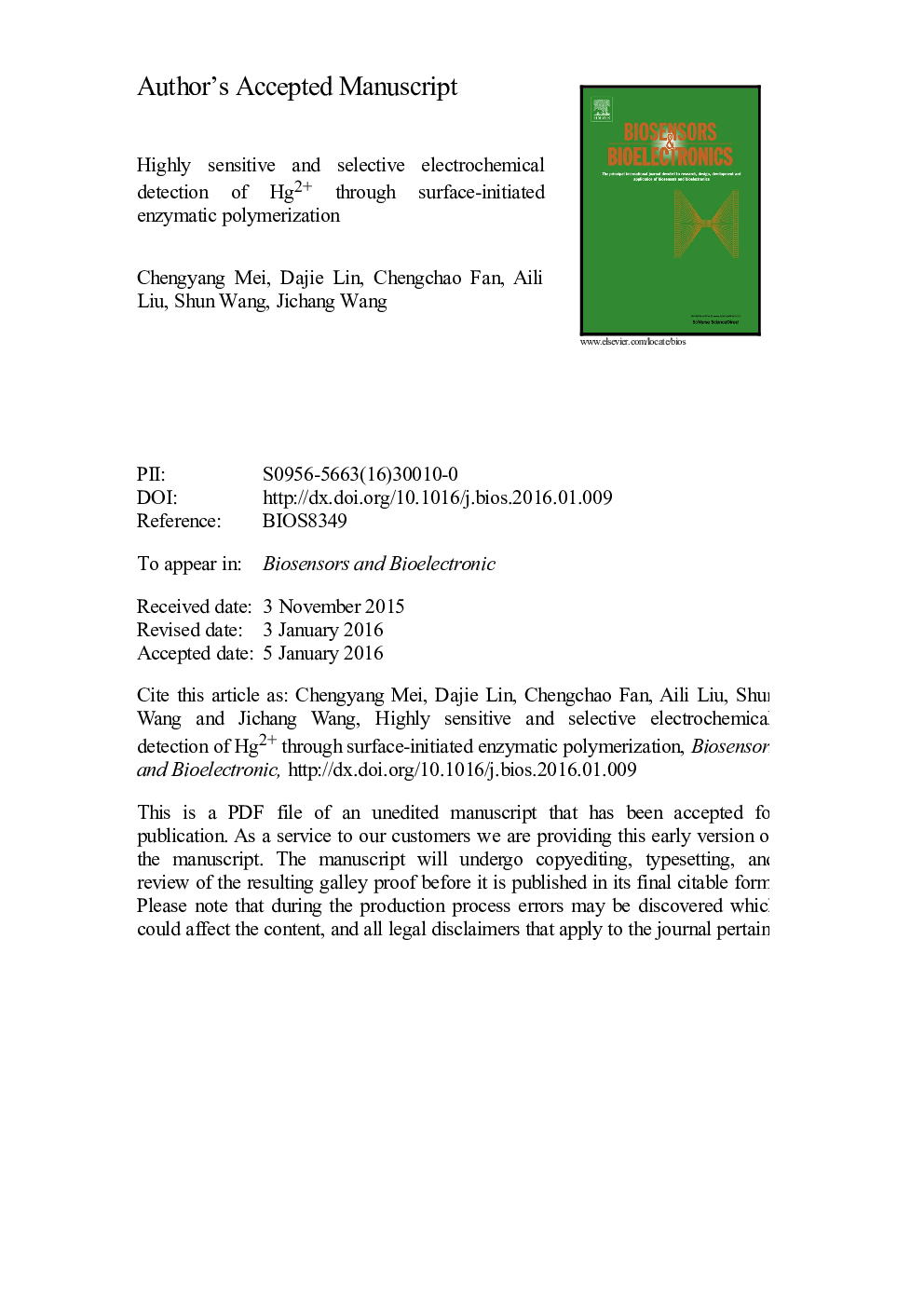| Article ID | Journal | Published Year | Pages | File Type |
|---|---|---|---|---|
| 7230651 | Biosensors and Bioelectronics | 2016 | 21 Pages |
Abstract
A Hg2+ electrochemical biosensor is developed by integrating thymine-Hg2+-thymine (T-Hg2+-T) base pairs for the high selectivity with surface-initiated enzymatic polymerization (SIEP) for signal amplification. The fabrication begins with the covalent conjugation of capture DNA probe labeled with thiol at its 3â²terminal onto the gold electrode. The presence of Hg2+ leads to DNA hybridization, in which complementary DNA was captured onto the biosensor surface, which subsequently catalyzed the addition of deoxynucleotides (dNTP) containing biotinlated 2â²-deoxyadenosine 5â²-triphosphate (biotin-dATP) by terminal deoxynucleotidyl transferase (TdT). The binding between biotin and strepavidin leads to the attachment of a large number of strepavidin functionalized silver nanoparticles (strepavidin-AgNPs), which could generate electrochemical stripping signal of silver to monitor the concentration of Hg2+ in KCl solution. Through utilizing the T-Hg2+-T selectivity and SIEP amplification, this assay method can detect aqueous Hg2+ with a wide linear range from 0.05Â nM to 100Â nM and a detection limit of 0.024Â nM. The application of this sensor in the analysis of drinking water demonstrates that the proposed method works well for real samples.
Related Topics
Physical Sciences and Engineering
Chemistry
Analytical Chemistry
Authors
Chenyang Mei, Dajie Lin, Chengchao Fan, Aili Liu, Shun Wang, Jichang Wang,
